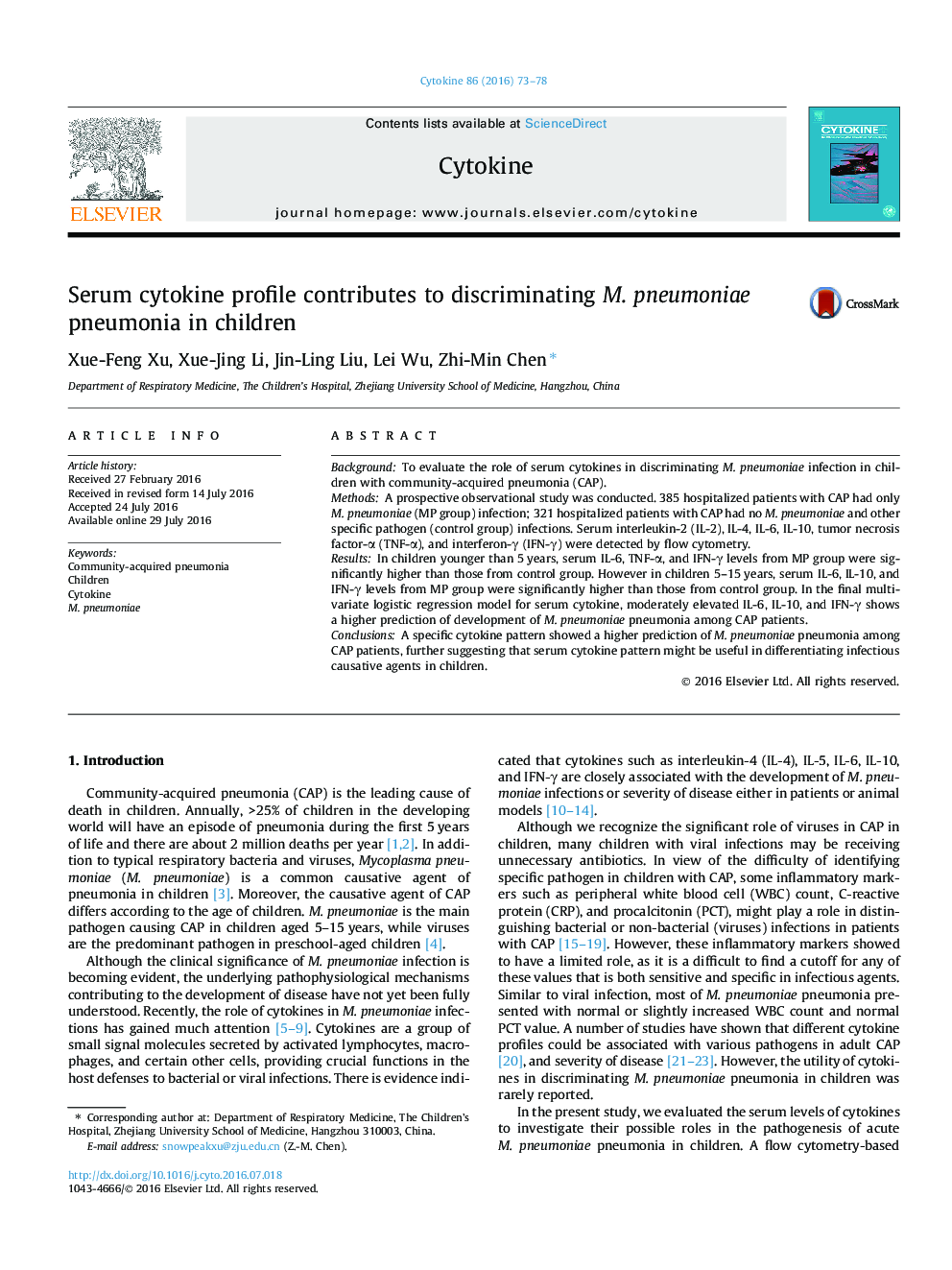| کد مقاله | کد نشریه | سال انتشار | مقاله انگلیسی | نسخه تمام متن |
|---|---|---|---|---|
| 2793767 | 1568726 | 2016 | 6 صفحه PDF | دانلود رایگان |
• Cytokines are strongly correlated with the pathogenic mechanism of MP infections.
• Serum IL-6, IL-10, and IFN-γ levels significantly increased in MP patients.
• Elevated IL-6, IL-10, and IFN-γ could predict MP pneumonia among CAP patients.
• Specific cytokine pattern contributes to differentiating infectious causative agents.
BackgroundTo evaluate the role of serum cytokines in discriminating M. pneumoniae infection in children with community-acquired pneumonia (CAP).MethodsA prospective observational study was conducted. 385 hospitalized patients with CAP had only M. pneumoniae (MP group) infection; 321 hospitalized patients with CAP had no M. pneumoniae and other specific pathogen (control group) infections. Serum interleukin-2 (IL-2), IL-4, IL-6, IL-10, tumor necrosis factor-α (TNF-α), and interferon-γ (IFN-γ) were detected by flow cytometry.ResultsIn children younger than 5 years, serum IL-6, TNF-α, and IFN-γ levels from MP group were significantly higher than those from control group. However in children 5–15 years, serum IL-6, IL-10, and IFN-γ levels from MP group were significantly higher than those from control group. In the final multivariate logistic regression model for serum cytokine, moderately elevated IL-6, IL-10, and IFN-γ shows a higher prediction of development of M. pneumoniae pneumonia among CAP patients.ConclusionsA specific cytokine pattern showed a higher prediction of M. pneumoniae pneumonia among CAP patients, further suggesting that serum cytokine pattern might be useful in differentiating infectious causative agents in children.
Journal: Cytokine - Volume 86, October 2016, Pages 73–78
